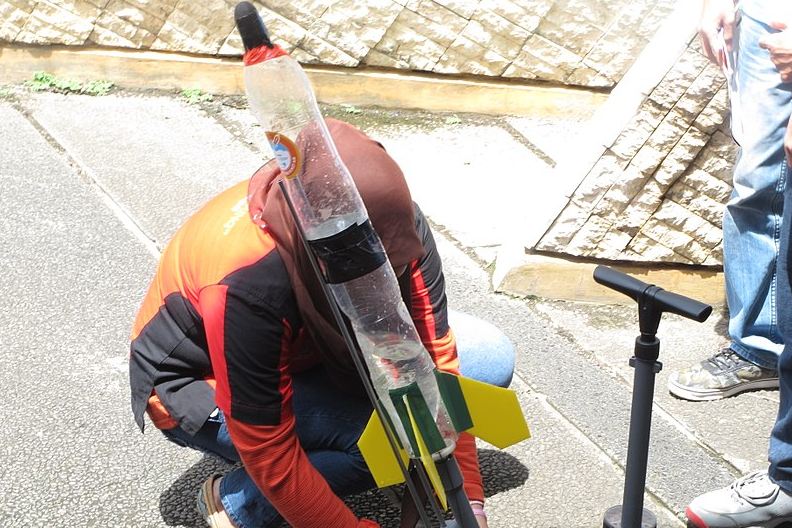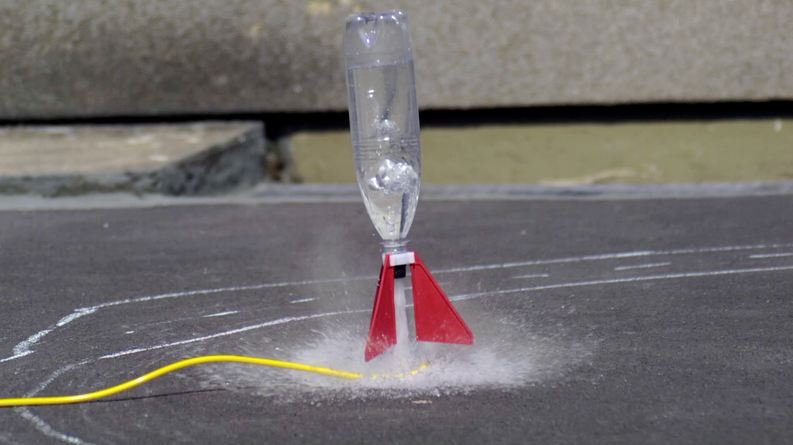Flying model rockets are among the safest and inexpensive ways for kids, students, and even adults to learn and understand the basics of forces and response of a vehicle to external forces. Model rockets are subjected to four different forces in flight, such as thrust, weight, aerodynamic forces, and lift and drag. To learn these things, there are different types of model rockets that can be used. One of the simplest types that most kids and students encounter is the bottle or water bottle rocket.
Water bottle rockets operate on the principle of the third law of motion by Newton. If you want to learn more about water bottle rockets and how they work, you’re in the right place. Read on as we’re giving you more information about the key components of a water bottle rocket.
Important Components of a Water Bottle Rocket
For a water bottle rocket to work effectively, it should be built with complete parts. Here are the important components of a water bottle rocket:
Bottle
Most of the time, a single polyethylene terephthalate or PET carbonated soft drink bottle is used as the pressure vessel. You can also make multi-bottle rockets by putting together two or more bottles in several different ways. For example, you can connect the bottles via their nozzles by cutting them apart and sliding the sections over each other. You can also connect their opening bottom and make a chain to increase volume. Doing this adds complexity, and the increased volume leads to increased weight.
There are also multi-stage rockets, which are a bit more complicated. It’s because they include two or more rockets stacked on top of each other. They are designed to launch while in the air, just like the multi-stage rockets that are utilized to send payloads into space.
Gas
There are different ways on how you can pressure a water bottle rocket. You can use a standard bicycle or car tire pump that can reach at least 75 psi or 520 kPa. You can also use water pressure to force all the air in an empty water hose into the rocket. In this method, pressure is the same as the water main.
Another way to pressurize a water bottle rocket is to use an air compressor. Those which are used in workshops to power pneumatic equipment and tools. Modifying a high-pressure compressor to be used as a water rocket power source can be dangerous, as can using high-pressure gases from cylinders. Aside from this, you can also use compressed gases in bottles, such as nitrogen gas or carbon dioxide air.
In addition, you can also try sublimating carbon dioxide gas from dry ice, as dry ice can expand 800 times in volume upon sublimation. The ignition of a mixture of explosive gases can also be used as the explosion creates pressure to launch the rocket into the air.
Nozzles
Compared to conventional combustion rocket nozzles, water bottler rocket nozzles differ as they do not have a divergent section. This is due to the fact that water is incompressible, and the divergent section does not provide anything to the efficiency. It can just actually make the performance worse.
When it comes to water bottle rockets, there are two main classes to choose from. One is open or also called the standard or full-bore. It has an inside diameter of 22mm, which is the standard soda bottle neck opening. The other class is restricted, which is anything that is smaller than the standard. Most of the time, restricted nozzles have an inside diameter of 9mm.
The nozzle size affects the thrust produced by the rocket. When the nozzles have a larger diameter, they will have faster acceleration with a shorter thrust phase. Smaller nozzles, on the other hand, give lower acceleration with a longer thrust phase.
Fins
The initial movement of the water bottle rocket reduces its stability, which can cause it to start tumbling end over end, decrease its maximum speed and length of glide. Therefore, to lower the center of pressure and add stability, fins and other stabilizers are added. These can bring the center of drag further back, well behind the center of mass at all times. These stabilizers are placed near the back of the bottle, where the center of mass is found. The increase in stability provided by fins is worth the extra drag. It also helps in maximizing the height to which the rocket will fly.
Landing Systems
With the use of stabilizing fins, the rocket will fly nose-first, giving it a significantly higher speed. However, the fins will also cause the rocket to fall faster compared to it would if it tumbled to the ground. In addition, this may also damage the rocket or whatever it strikes when it lands.
There are some water bottle rockets that have a parachute and other recovery systems to help prevent issues when they land. However, these may also suffer from malfunctions. Therefore, when making or designing a water bottle rocket, you need to put this into consideration. To avoid damage or injury caused by a falling rocket, rubber bumpers, crumple zones, and safe launch practices should be utilized.
Launch Tubes
Launch tubes are also used for water bottle rockets. This fits inside the nozzle of the rocket and extends upward to the nose. It is fixed to the ground. When the rocket starts accelerating upward, the launch tube will block the nozzle. With this, very little water will be ejected until the rocket leaves the launch tube. It allows efficient conversion of the potential energy in the compressed air to kinetic energy and gravitational potential energy of the rocket and water.
During the initial phase of the launch, high efficiency is important as rocket engines are least effective at low speeds. When you use a launch tube, it can increase the speed and height reached by the water bottle rocket. These are most effective when used with longer rockets.
These are the key components of a water bottle rocket. If you are making one for a science fair or for fun and education, you need to make sure that all of these components are present to be able to launch the water bottler rocket effectively. We hope this article helped you in learning about the key components of a water bottle rocket.

